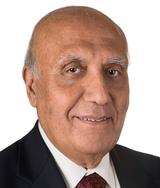Movement Disorders Research
Below are labs and faculty pursuing diverse research within the field of movement disorders, including clinical trials, patient outcomes, quality-of-life studies and basic science research.
To learn about ongoing clinical trials or participate in a study, visit the clinical trials page for our Division of Movement Disorders.
Labs
Awatramani LabDr. Awatramani’s lab investigates dopamine neurogenesis and subtypes as well as the role of microRNAs in Schwann cell (SC) differentiation.
Dr. Awatramani’s lab investigates dopamine neurogenesis and subtypes as well as the role of microRNAs in Schwann cell (SC) differentiation.
Research Description
Topic 1. Mechanisms underlying dopamine neurogenesis
The floor plate, the ventral organizing center in the embryonic neural tube, patterns the neural tube by secreting the potent morphogen Shh. Using genetic fate mapping, we have recently shown that the midbrain floor plate, unlike the hindbrain and spinal cord floor plate, is neurogenic and is the source of midbrain dopamine neurons (Joksimovic, et al, 2009 Nature Neuroscience, Joksimovic et al. 2009 PNAS). We are interested in understanding pathways that are involved in floor plate neurogenesis and production of dopamine neurons. We have shown that Wnt signaling is critical for the establishment of the dopamine progenitor pool and that miRNAs may modulate the dosage and timing of the Wnt pathway (Anderegg et al, PloS Genetics 2013).
Topic 2. Deconstructing Dopaminergic Diversity
The neurotransmitter dopamine, produced mainly by midbrain dopaminergic neurons, influences a spectrum of behaviors including motor, learning, reward, motivation and cognition. In accordance with its diverse functions, dopaminergic dysfunction is implicated in a range of disorders affecting millions of people, including Parkinson’s disease (PD), schizophrenia, addiction and depression. How a small group of neurons underpins a gamut of key behaviors and diseases remains enigmatic. We postulated that there must exist several molecularly distinct dopaminergic neuron populations that, in part, can account for the plethora of dopaminergic functions and disorders. We are currently working to test this hypothesis and define dopamine neuron subtypes.
Topic 3. MicroRNAs in Schwann cell (SC) differentiation
MicroRNAs, by modulating gene expression, have been implicated as regulators of various cellular and physiological processes including differentiation, proliferation and cancer. We have studied the role of microRNAs in Schwann cell (SC) differentiation by conditional removal of the microRNA processing enzyme, Dicer1 (Yun et al, 2010, J Neurosci) . We reveal that mice lacking Dicer1 in SC (Dicer1 cKO) display a severe neurological phenotype resembling congenital hypomyelination. SC lacking Dicer1 are stalled in differentiation at the promyelinating state and fail to myelinate axons. We are beginning to determine the molecular basis of this phenotype. Understanding this will be important not only for congenital hypomyelination, but also for peripheral nerve regeneration and SC cancers.
For more information, please see Dr. Awatramani's faculty profile.
Publications
View Dr. Awatramani's complete list of publications in PubMed.
Contact Us
Rajeshwar Awatramani, PhD at 312-503-0690
Piso LabDr. Caraveo Piso’s lab studies the role of Ca2+ signaling in synucleinopathies using diverse model systems from yeast to human neurons.
Dr. Caraveo Piso’s lab studies the role of Ca2+ signaling in synucleinopathies using diverse model systems from yeast to human neurons.
Research Description
We are focused on a group of neurodegenerative diseases collectively known as synucleinopathies, characterized by the aggregation of α-synuclein (α-syn). These include Parkinson's Disease, Dementia with Lewy bodies and Multiple Systems Atrophy among others. We use diverse systems that span from yeast to mammalian models to study these diseases. In particular, we are interested in the role Ca2+ signaling plays in the toxicity caused by α-syn and to delineate basic mechanisms of Ca2+ signaling relevant to neuronal physiology.
For more information, visit Dr. Caraveo Piso's faculty profile or the Caraveo Piso Lab website.
Publications
Please see Dr. Caraveo Piso's publications on PubMed.
Contact Information
Assistant Professor in Neurology
Ward 10-150
312-503-4492
Krainc LabDr. Krainc’s lab studies the mechanisms of neuronal dysfunction in neurodegenerative disorders that affect children and adults.
Dr. Krainc’s lab studies the mechanisms of neuronal dysfunction in neurodegenerative disorders that affect children and adults.
Research Description
The overarching goal of my laboratory is to study rare diseases such Huntington’s and genetic forms of Parkinson’s disease, as a window to understanding neurodegeneration across the lifespan. More recently, we have focused on rare lysosomal diseases such as Gaucher’s in order to identify specific targets and mechanisms that contribute to neurodegeneration in Parkinson’s and related synucleinopathies. It is expected that such defined targets will facilitate mechanism-based development of targeted therapies for children with neuronopathis Gaucher’s disease as well as adult-onset synucleinopathies such as Parkinson’s disease. To validate and study these targets and novel therapies in human neurons, we have utilized induced pluripotent stem cells (iPS) generated by reprogramming of patient-specific skin fibroblasts. These iPS cells are differentiated into specific neuronal subtypes in order to characterize the contribution of genetic, epigenetic and environmental factors to disease mechanisms and to test novel therapeutic approaches.
For more information see the faculty profile of Dimitri Krainc or visit the Krainc Lab website.
Recent Publications
View Dr. Krainc's full list of publications in PubMed.
Contact information
Dimitri Krainc, MD, PhD
Ward Professor and Chairman
312-503-3936
Lubbe LabDr. Lubbe’s lab investigates the genetics of Parkinson’s disease and other neurodegenerative diseases.
Dr. Lubbe’s lab investigates the genetics of Parkinson’s disease and other neurodegenerative diseases.
Research Description
The characterization of how genetic changes contribute to increasing disease risk or to disease causality is key to understanding the underlying disease etiology. Through the bioinformatics analysis of next generation sequencing data (whole genome or exome), the Lubbe lab aims to identify novel genes or loci that when altered may contribute to the development of Parkinson’s disease and other neurodegenerative diseases. Furthering our knowledge of the processes that cause Parkinson’s disease could potentially pave the way to the development of novel treatments.
For lab information and more, visit the Lubbe Lab website or Dr. Lubbe's faculty profile.
Contact Information
312-503-5298
Ward 10-132
Mazzulli LabDr. Mazzulli’s lab investigates cellular self-renewal systems, amyloid formation in the brain, and the relationship of these processes to neurodegeneration and aging.
Dr. Mazzulli’s lab investigates cellular self-renewal systems, amyloid formation in the brain, and the relationship of these processes to neurodegeneration and aging.
Research Description
We are investigating cellular self-renewal mechanisms, amyloid formation in the brain, and the relationship of these processes to neurodegeneration and aging. We primarily use human neurons made from induced pluripotent stem cells as well as in vitro protein aggregation models to delineate the pathogenic mechanisms of age-related neurodegenerative diseases such as Alzheimer’s and Parkinson’s disease. Our group is largely focused on utilizing neurons from rare lysosomal diseases to study how alterations in biomolecule degradation pathways influence the accumulation and conformation of disease-linked proteins such as alpha-synuclein. Another major effort of the lab is to determine how amyloid formation influences cellular self-renewal mechanisms in neurons, such as lysosomal clearance of damaged macromolecules, and the effect on the aging process.
We use the following techniques and model systems:
- Differentiation of induced pluripotent stem cells into midbrain dopamine neurons to model both rare and common neurodegenerative diseases.
- Analytic biochemical techniques, such as HPLC and size exclusion chromatography, to study protein accumulation and misfolding in neurons.
- Analysis of protein and lipid degradation pathways in neurons with a focus on the autophagic-lysosomal clearance system by a variety of biochemical and cell biological techniques
- Primary neuronal cultures and transgenic mice to study the effect of metabolic pathways on protein accumulation and aging.
- Recombinant protein purification of disease-related proteins to study conformational changes in cell-free in vitro systems.
Publications
For lab information and more, visit the Dr. Mazzulli's faculty profile or the Mazzulli Lab website.
Contact Us
312-503-3933
Opal LabDr. Opal’s lab aims to understand the cellular basis of neurodegeneration.
Dr. Opal’s lab aims to understand the cellular basis of neurodegeneration.
Research Description
The long-term goal of my laboratory is to understand the cellular basis of neurodegeneration. We are testing the idea that neurodegeneration results from derangements in relatively few but strategic sub-cellular pathways. By identifying critical components of these pathways one could begin to not only understand the biology of neurodegeneration, but also embark on the design of novel therapeutic agents.
We are currently studying the autosomal dominant disorder Spinocerebellar Ataxia Type 1 (SCA1), a relentless disease that affects cerebellar Purkinje cells and brainstem neurons. This disorder is caused by a polyglutamine expansion in the involved disease protein and is thus similar to a growing number of disorders, including Huntington disease, that share this mutational mechanism. Patients with SCA1 begin to display cerebellar signs characterized by motor incoordination or ataxia in early to mid adulthood. Unfortunately there is no treatment for this disease and patients eventually succumb from the complications of brainstem dysfunction.
Current Projects
-
Testing the transcriptional hypothesis in SCA1 pathogenesis:
One of the earliest features of this disease is change in the gene expression signature within neurons affected in this disease. We are elucidating the pattern of gene expression changes in the vulnerable Purkinje cell population and identifying the contribution of these alterations to pathology.
-
Testing the role of the vascular and angiogenic factor VEGF in SCA1 pathogenesis.
One of the genes that we have already found to be down-regulated is the neurotrophic and angiogenic factor VEGF. Importantly, we have discovered that genetic or pharmacologic replenishment of VEGF mitigates SCA1 pathogenesis. These results suggest a novel therapeutic strategy for this incurable disease and a possible cross-talk between the degenerating cerebellum and its microvasculature. We are pursuing mechanistic experiments to learn how low VEGF mediates SCA1 pathology. In addition, we are working actively towards testing the potential for VEGF as a therapy in human ataxic disorders.
-
Testing the role of ataxin-1 misfolding and clearance in disease pathogenesis.
Several studies suggest that ataxin-1 accumulates in neurons because of its inability to be cleared by the protein-misfolding chaperone pathway. We are testing different strategies to promote ataxin-1 clearance.
In addition to spinocerebellar ataxia, we are also studying genetic parkinsonian and dystonic syndromes.
For more information see the faculty profile of Puneet Opal, MD, PhD or visit the Opal Lab website.
Publications
View Dr. Opal's full list of publications at PubMed.
Contact
Phone: 312-503-4699
Lab Staff
Research Associates
Postdoctoral Fellows
Edamakanti Chandrakanth Reddy (Chandu), PhD
Dilyan Dryanovski, PhD
Yuan-shih (Jennifer) Hu, PhD
Eitan Israeli, PhD
Graduate Students
Natalie Frederick
Kevin Murnan
Technical Staff
Undergraduate Student
Sean Bald
In-Won Chang
Wong LabSuper-resolution live microscopy: Identifying new organelle dynamics underlying neurodegenerative diseases
Super-resolution live microscopy: Identifying new organelle dynamics underlying neurodegenerative diseases
Research Description
Neurodegenerative diseases have been linked to the misregulation of multiple organelles including mitochondria and lysosomes, which are key for cellular and neuronal function. Moreover, organelles are highly dynamic and investigating their regulation in real-time is crucial for advancing our understanding of cell biology, cellular neuroscience, and neurodegenerative disease mechanisms. We recently identified mitochondria-lysosome contact sites as important regulators for mitochondrial and lysosomal network dynamics, which are implicated in multiple neurological diseases including Parkinson's and Charcot-Marie-Tooth disease.
Our ongoing research seeks to:
- Use super-resolution live cell microscopy to identify new cellular pathways
- Investigate how mitochondria-lysosome contact sites drive cellular & neuronal homeostasis and human disease pathogenesis
- Explore the roles and regulation of inter-organelle membrane contact sites
- Elucidate how organelle dynamics contribute to neurodegeneration in Parkinson’s, Charcot-Marie-Tooth, ALS & Alzheimer’s disease
For more information, visit the Yvette Wong Lab website or Yvette Wong's faculty profile.
Publications
View Dr. Wong's full list of publications in PubMed.
Contact Us
Research Faculty
Akhtar, Rizwan S
Assistant Professor, Neurology (Movement Disorders)
Armakola, Maria
Research Assistant Professor, Neurology (Movement Disorders)
Awatramani, Rajeshwar
Professor, Neurology (Movement Disorders)
Professor, Weinberg College of Arts and Sciences
Bega, Danny
Associate Professor, Neurology (Movement Disorders)
Caraveo Piso, Gabriela
Assistant Professor, Neurology (Movement Disorders), Pharmacology
Krainc, Dimitri
Professor, Neurology (Movement Disorders), Neuroscience, Neurological Surgery
Professor, Weinberg College of Arts and Sciences
Kim, Myung Jong
Research Assistant Professor, Neurology (Movement Disorders)
Larson, Danielle N
Assistant Professor, Neurology (Movement Disorders)
Gonzalez Latapi, Paulina
Assistant Professor, Neurology (Movement Disorders)
Mazzulli, Joseph R
Associate Professor, Neurology (Movement Disorders)
Melen, Onur
Lecturer, Neurology (Movement Disorders)
Verhagen Metman, Leonard
Professor, Neurology (Movement Disorders), Neurological Surgery
Mencacci, Niccolo E
Assistant Professor, Neurology (Movement Disorders)
Opal, Puneet
Professor, Neurology (Movement Disorders), Cell and Developmental Biology
Poon, Cynthia
Research Associate Professor, Neurology (Movement Disorders)
D.A. Raj, Divya
Research Assistant Professor, Neurology (Movement Disorders)
Rosenow, Joshua M
Professor, Neurological Surgery, Neurology - Ken and Ruth Davee Department, Physical Medicine and Rehabilitation
Safren, Nathaniel
Research Assistant Professor, Neurology (Movement Disorders)
Song, PingPing
Research Assistant Professor, Neurology (Movement Disorders)
Simuni, Tanya
Professor, Neurology (Movement Disorders)
Wani, Willayat
Research Assistant Professor, Neurology (Movement Disorders)
Wong, Yvette C
Assistant Professor, Neurology (Movement Disorders)
Wu, Allan D
Professor, Neurology (Movement Disorders), Neurology (Hospital Neurology)




















